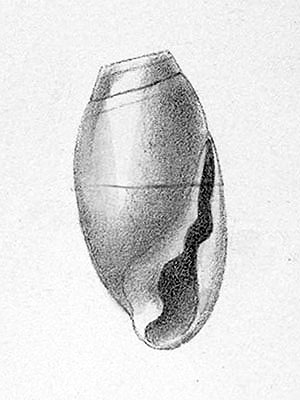Grabham’s Amphorella Snail (Amphorella grabhami)
Grabham’s Amphorella Snail was described in 1908; it is only known from subfossil material that was recovered from deposits at the Ponta de São Lourenço Peninsula in the east of Madeira which were dated to the Middle Pleistocene; however, the species survived well into the Late Holocene and the youngest known specimens can be dated to an age of around 50 years, meaning this species disappeared around the 1950s without having ever been found alive. [1][2]
The shells reached sizes of about 0.6 cm; they were described as follows.:
“The shell resembles the small form of tornatellina in shape; but the very thick outer lip is inflexed, with an inwardly projecting lobe below the middle; supraparietal plait short and narrow; parietal nodule low but distinct.” [1]
***
syn. Ferussacia tornatellina var. grabhami Pilsbry
*********************

(public domain)
*********************
References:
[1] George W. Tryon; Henry A. Pilsbry; a.o.: Manual of Conchology. Second series: Pulmonata. Volume 19. Oleacinidae, Ferussacidae 1907-1908
[2] Glenn A. Goodfriend; R. A. D. Cameron; L. M. Cook: Fossil evidence of recent human impact on the land snail fauna of Madeira. Journal of Biogeography 21: 309-320. 1994
*********************
edited: 15.02.2024
